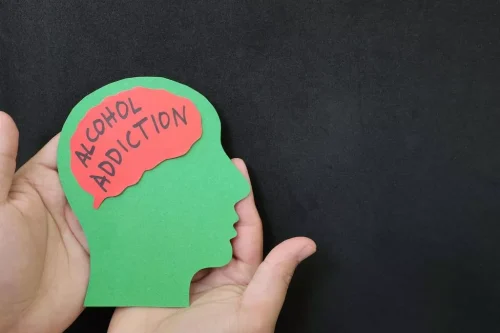
For those with alcohol use disorder, withdrawal is just the first (but very important) step on a long journey to recovery. These first few weeks are critical because they are when the risk of relapse is highest. However, try not to have too many firm expectations, as symptoms can continue for multiple weeks in some people. If you or someone you know shows signs of delirium tremens, go to the emergency room immediately. Over time, however, the body builds a tolerance to alcohol, and a person may have to drink more and more to get the same feeling.

History and Physical
In early stages, symptoms usually are restricted to autonomic presentations, tremor, hyperactivity, insomnia, and headache. In minor withdrawal, patients always have intact orientation and are fully conscious. Symptoms start around 6 h after cessation or decrease in intake and last up to 4–48 h (early withdrawal).6, 10 Hallucinations of visual, tactile or auditory qualities, and illusions while conscious are symptoms of moderate withdrawal. Unstable vital signs increase the risk of complications and can be managed with medications. People who experience severe withdrawal symptoms or DTs may require hospitalization or intensive care unit (ICU) treatment during alcohol.
Treatment / Management

If you consistently consume significant amounts of alcohol, your CNS gets used to this effect. Your CNS must work harder to overcome the depressant effects of alcohol to keep your body functioning. We do not receive any commission or fee that is dependent upon which treatment provider a caller chooses. Hypertension is common, and some doctors also prescribe beta blockers during withdrawal.

Common Alcohol Withdrawal Symptoms
Click here to learn more about helping someone with alcohol use disorder. AWS can evolve in a few hours or a few days but often develops between 6 to 24 hours after your last drink. If you need help finding a primary care doctor, then check out our FindCare tool here. If you decide to get treatment, your doctor can alcohol withdrawal recommend the type of care that you need. This process temporarily restores homeostasis, or chemical balance, in an effort to counteract the impact of long-term alcohol use on the brain. It’s important to be honest about your alcohol use — and any other substance use — so your provider can give you the best care.
History and exam
To maintain homeostasis in the CNS, inhibitory signals from the GABAergic system are balanced by excitatory neurotransmitters such as glutamate. Alcohol, a CNS depressant, stimulates the GABAergic system and, in acute intoxication, causes a range of clinical manifestations such as disinhibition, euphoria, and sedation. At the same time, endogenous GABA is downregulated.[3] Thus, when alcohol is withdrawn, a relative deficit of GABA may occur and simultaneous excess in glutamate, resulting in the excitatory symptoms seen in https://ecosoberhouse.com/ syndrome.
What Is Alcohol Withdrawal Syndrome?
Withdrawal is different for everyone; there really is no „normal“ and it can be hard to predict an individual person’s experience. Ethanol is the key ingredient in many alcoholic beverages, such as beer, wine, and spirits. As a depressant, alcohol can suppress the central nervous system (CNS), making the body reliant on it with prolonged exposure.
- DT’s, which last up to 3 or 4 days, are characterized by disorientation and are usually accompanied by autonomic signs resulting from the activation of the nerves responsible for the body’s response to stress).
- Now, try to keep in mind that even though withdrawal symptoms may be unpleasant, they’re temporary, and treatment is available during this time.
- The syndrome is due to overactivity of the central and autonomic nervous systems, leading to tremors, insomnia, nausea and vomiting, hallucinations, anxiety, and agitation.
- Benzodiazepines carry a Food and Drug Administration boxed warning because there is a risk of dependence.
- It does this by reducing the excitatory portion of the CNS called the glutamate receptors while increasing the inhibitory portion called the gamma-aminobutyric acid receptors.
Similarly, many neurotransmitters and mechanisms probably are involved in AW. Of these neurotransmitters, scientists best understand the roles of GABA and glutamate. For example, researchers have demonstrated that alcohol enhances (i.e., potentiates) GABA’s inhibitory effects on signal-receiving neurons, thereby suppressing neuronal activity.
Patients with alcohol hallucinosis see, hear, or feel things that are not there even though they are fully conscious and aware of their surroundings. Moreover, hallucinosis is not necessarily preceded by various physiological changes (i.e., autonomic signs). The most severe manifestations of AW include hallucinosis, seizures, and DT’s (see also the figure on pp. 63, from Victor and Adams’ classic paper).

Support Groups
Treating alcohol withdrawal is a short-term fix that doesn’t help the core problem. When you talk to your doctor about symptom relief, it’s a good idea to discuss treatment for alcohol abuse or dependence. For most people, alcohol withdrawal symptoms will begin sometime in the first eight hours after their final drink. A rare but very serious syndrome called delirium tremens can occur during alcohol withdrawal.
Do not sell my personal information Privacy Policy and Terms of Use
Counseling is usually recommended for someone experiencing alcohol withdrawal. A counselor can advise on ways to cope with the mental and emotional aspects of withdrawal. While these symptoms are more severe than Stage 1, they are not life-threatening. When a person drinks heavily, frequently, or for prolonged periods of time, their brain compensates for alcohol’s depressant effects by releasing more stimulating chemicals (compared to when a person does not drink).
